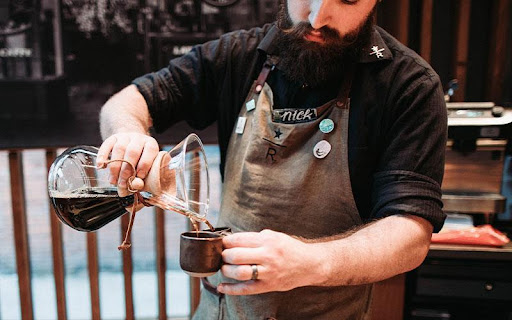Table Of Contents
Often people spend hours preparing a perfect homemade meal for their loved ones. The creative process combined with wafting smells can make anyone hungrier, and they look forward to enjoying the meal. However, you will need the right wine to complement it to round out the dish.
Selecting the perfect wine can be a challenge for people who do not understand which wine goes with which food. The best wine pairings can enhance the flavor of the food and create a balance between different dish components.
At the end of the day, it all depends on your taste and liking, so there are no hard and fast rules. However, there some guidelines you must adhere to when picking your wine. Let’s discuss these in detail.
A Basic Rule Of Thumb
The primary distinction between wines is red and white. However, you have to keep a few other factors in mind when pairing food with wine.
Fruity, dry, and oak-aged wines are the three categories of wines you must understand for food pairing. While each wine has different characteristics and each variety exhibits different sensations, these traits determine the wine and food pairing for your meal. Additionally, selecting the best wines is easier when you have a variety of wines on hand.
You can find the best wine from all cities and towns home to the best wineries, such as Gatlinburg, Santa Maria Valley, Napa Valley, etc. Since some of these cities, like Gatlinburg, are also tourist attractions with a growing food scene, the Gatlinburg winery offers several vine choices and different packages that suit tourists’ needs.
Pair Similar Flavors
The easiest way to pair wine with food is to choose a wine that compliments your dish. If your dish has a citrusy base or lemon-based sauce, it will pair perfectly with Pinot Grigio or Sauvignon Blanc. Similarly, a Malbec, Cabernet Sauvignon, or this recipe renieri invetro will pair nicely with any kind of smoky meat or barbeque. This way, the flavors of the wine and the food will accentuate the flavors, resulting in a satisfying dining experience.
Use Less Alcoholic Wines For Spicier Food
Each wine, its taste, and alcohol content differ according to its processing and sugar content. Before a wine goes into fermentation, it is only a sugary liquid. In other words, how much sugar a wine contains in its unfermented state determines how much alcohol it has after fermentation. However, several other variables can impact the fermentation process and its characteristics. Wines with lower alcohol content pair nicely with spicy food because the alcohol only accentuates their oiliness.
Pairing Meats With Wine
In most meat-based dishes, meat is the dish’s focal point and the most prepared ingredient. Therefore, pairing the wine according to the meat makes perfect sense. If you have prepared a red meat dish, pair it with tannic and dry wines. Some wines in this category include Merlot, Cabernet Sauvignon, Malbec, etc. In some cases, white wine may also pair well with the fish.
However, when your meal consists of white meat, such as poultry, pork, or fish, your sauce is the focal taste factor of the dish and determines your wine pairing. If you are preparing the sauce with a wine base, the easiest solution is to pair the same wine with your meal.
Tips For Picking A Good Bottle Of Wine
Since the flavor preferences of wine are subjective and other preferences that make it a good wine, several different factors impact the decision when you pick a bottle. For example, consider the occasion you are buying a bottle for, your flavor preferences, price points, labels, alcohol content, etc.
-
Pick A White Or Rose If You Are New To Wine
Each person’s taste pallet tends to mature as they grow, which applies to the type of wine you like. Your preference for wine will change as you grow, so it is always a good idea to start with sweeter white wine or a rose. The reason is that drier wines with a high tannin may not suit your taste at first and may seem bitter and sharp. At first, trying dry or too-dry wines can scare you away from wine, so try sweet or semisweet flavors instead.
-
Reflect On The Flavors You Enjoy
Each wine has a distinct flavor, which means that the flavor you enjoy in foods and other beverages will impact the type of wine you prefer. For example, if you prefer sweeter beverages, you will enjoy a sweet wine compared to semi-sweet or dry wines. If you like the bitterness in tea and coffee, then semi-sweet wines with a more acidic taste may taste good.
-
Consider The Occasion
Occasion matters a lot in the choice you make while buying a bottle. Be sure to consider whether you plan to buy the bottle for yourself or if you will share it with friends and family. Since wines serve different purposes, the presence or lack of other people can influence the decision.
-
Always Read The Label
When you have a whole shelf of wines to choose from, making a choice can get difficult, especially if you are a novice. So keep in mind that some brands use catchy colors, fonts, and illustrations to make a brand sound more appealing to you. However, the best-looking bottle isn’t always the best choice. So instead of admiring the illustration and fonts, read the information label to understand what the bottle is offering. Check the amount of information a label is offering. If specific information is available about the type of grapes, region, and valley, it likely is one of the better wines.
Conclusion
Your meal doesn’t have to be boring or time-consuming. Wine enhances the joy of eating if it’s paired with the right type of food. If you want to make the most of your meal, choose your beverages carefully. You can also subscribe to a monthly package of wine choices from your favorite winery and prepare your meals that complement them.






